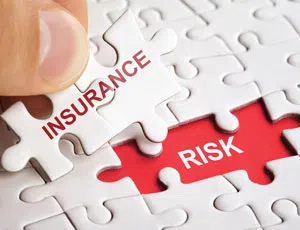Day one and lesson one of the class on the refrigeration cycle starts with one fact: there is no such thing as “cold.” We learned that “cold” is a subjective term and means nothing to the HVACR task of creating “cold” temperature in a certain space.
Cold feels like and actually is a lack of heat. What we deal with every day is heat, and what the refrigeration cycle does is allow us to transfer heat from one area to another. We are taught that what happens inside of Granny’s 1954 Frigidaire in her garage that keeps beverages cold is the same thing that takes place in the largest meat packing warehouse. We are transferring heat from one space and putting it elsewhere.
Business owners, this is exactly what you do with insurance. Savvy owners and managers of businesses understand that insurance is a means to transfer risk away from their balance sheets to those who are in the business of handling risk: insurance companies.
You do this by swapping a premium for a promise. Your hard-earned money for an insurance policy. When you grasp this concept and apply it you are miles ahead of your competition.
In the case of insurance, be it general liability, auto, work comp, property or any other, you are trading a small known amount of capital, your premium, to avoid a large unknown, a claim, that allows you to keep things manageable from day to day.
You are doing via a policy what you do every day via the refrigeration cycle, moving heat. You pay a property policy premium to avoid losing all that you have if your building burns to the ground. You can afford the premium, but you cannot afford to buy a new building and all that is inside of it.
How the insurance companies do this is complex yet simple. They know and utilize their own cycle. They use premium dollars to pay agents, their overhead and claims while investing the capital along the way. They apply two accepted concepts, the law of large numbers and the spreading of risk, to hopefully come out in the black when done.
The law of large numbers reveals that when we have a large enough sample of something there is a predictable outcome. It is the pressure/temperature chart of insurance. The size and capability of the condenser depends on the outdoor temperature.
So too with insurance, the measurable risk will affect the premium. Who is most likely to cause an auto accident, the 18-year-old knucklehead or the 50-year-old surehanded veteran? The accuracy of the statistics behind this are astonishingly precise, hence the insurance company can price the policy accordingly (you pay more to insure the knucklehead).
Spreading the risk is a straightforward concept. If you’re moving $100M of equipment across the ocean, is it safer to put it in 10 separate boats or just one? Ten separate boats with $10M of equipment limits the severity of a large loss. What is the chance of all 10 boats sinking?
Insurance companies collect premium from policyholders spread all over the place and pay claims when required. It is the age-old concept, do not put all of your eggs in one basket.
The complex insurance cycle uses a multitude of ever-moving pieces to offer you a policy for a premium and pay out when there is a claim. They exploit the law of large numbers and the spreading of risk to their — and your — advantage.
The local convenience store owner knows nothing about a compressor, condenser, evaporator or TXV. She just wants the ice cream case to work and she knows you make that happen. If she knew just a bit about how the ice cream case worked, however, she would keep the condenser clean and be less apt to hire an incompetent technician.
Now, not every insurance agent has spent hours in a large warehouse freezer setting super-heat or an eight-hour day cleaning roof top condensers but your agent should help you manage risk in the way explained above and not simply be about price, price, price.
Most of the types of insurance and the limits you purchase are mandated by others, either the government, vendors or manufacturers. This leaves most of those responsible for the insurance program to think price, price, price.
But what happens with the HVACR customer that only thinks price, price, price when they choose service, repair and replacement of equipment? They are the ones who complain when the product or service they chose did not meet their expectations and then lay the blame at your feet.
Make sure your insurance program is crafted by someone who understands their cycle as well as you understand yours. If they only talk about price, price, price then treat them like you do a customer that does so with you, with certain caution.

